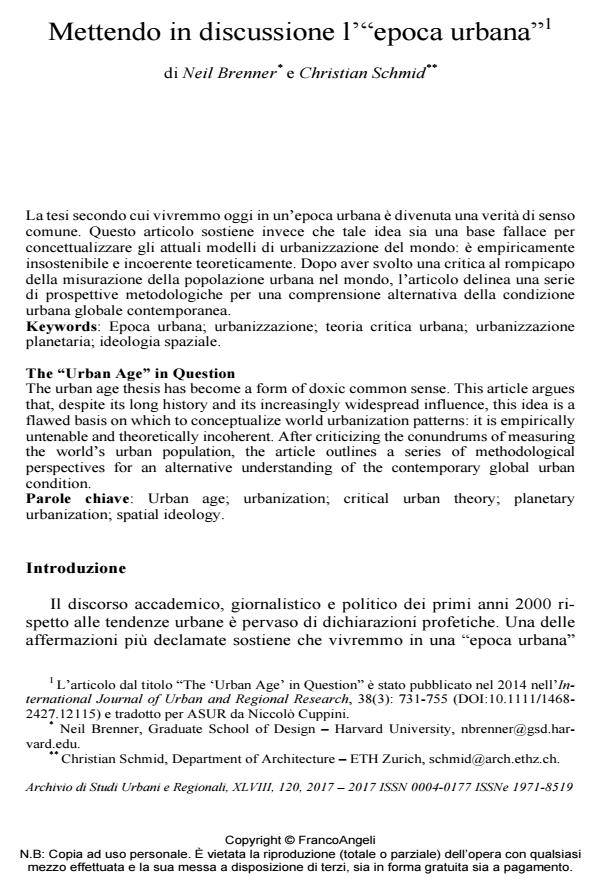The "Urban Age" in Question
Journal title ARCHIVIO DI STUDI URBANI E REGIONALI
Author/s Neil Brenner, Christian Schmid
Publishing Year 2017 Issue 2017/120
Language Italian Pages 36 P. 13-48 File size 821 KB
DOI 10.3280/ASUR2017-120002
DOI is like a bar code for intellectual property: to have more infomation
click here
Below, you can see the article first page
If you want to buy this article in PDF format, you can do it, following the instructions to buy download credits

FrancoAngeli is member of Publishers International Linking Association, Inc (PILA), a not-for-profit association which run the CrossRef service enabling links to and from online scholarly content.
The urban age thesis has become a form of doxic common sense. This article argues that, despite its long history and its increasingly widespread influence, this idea is a flawed basis on which to conceptualize world urbanization patterns: it is empirically untenable and theoretically incoherent. After criticizing the conundrums of measuring the world’s urban population, the article outlines a series of methodological perspectives for an alternative understanding of the contemporary global urban condition.
Keywords: Urban age; urbanization; critical urban theory; planetary urbanization; spatial ideology.
Neil Brenner, Christian Schmid, Mettendo in discussione l’"epoca urbana" in "ARCHIVIO DI STUDI URBANI E REGIONALI" 120/2017, pp 13-48, DOI: 10.3280/ASUR2017-120002